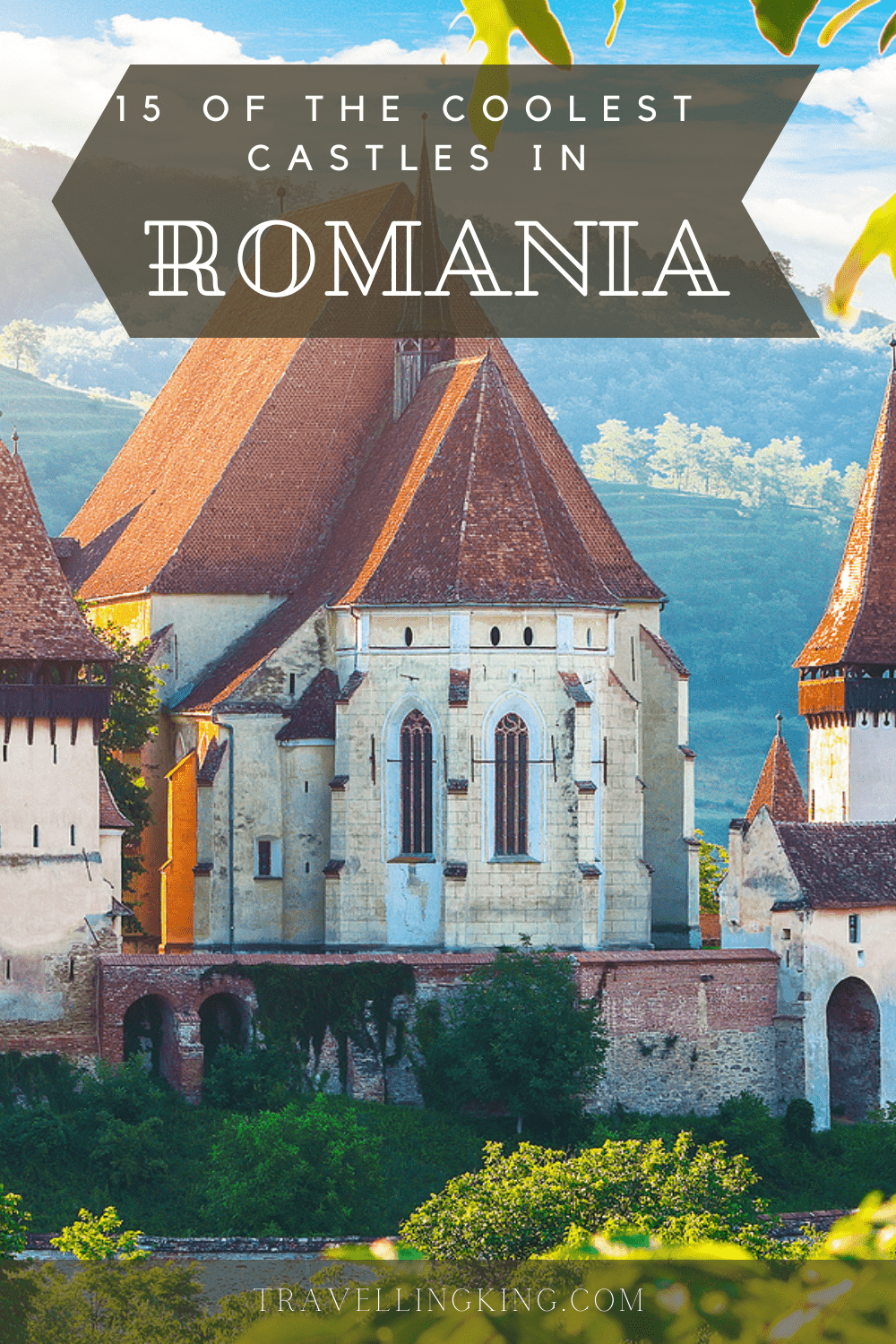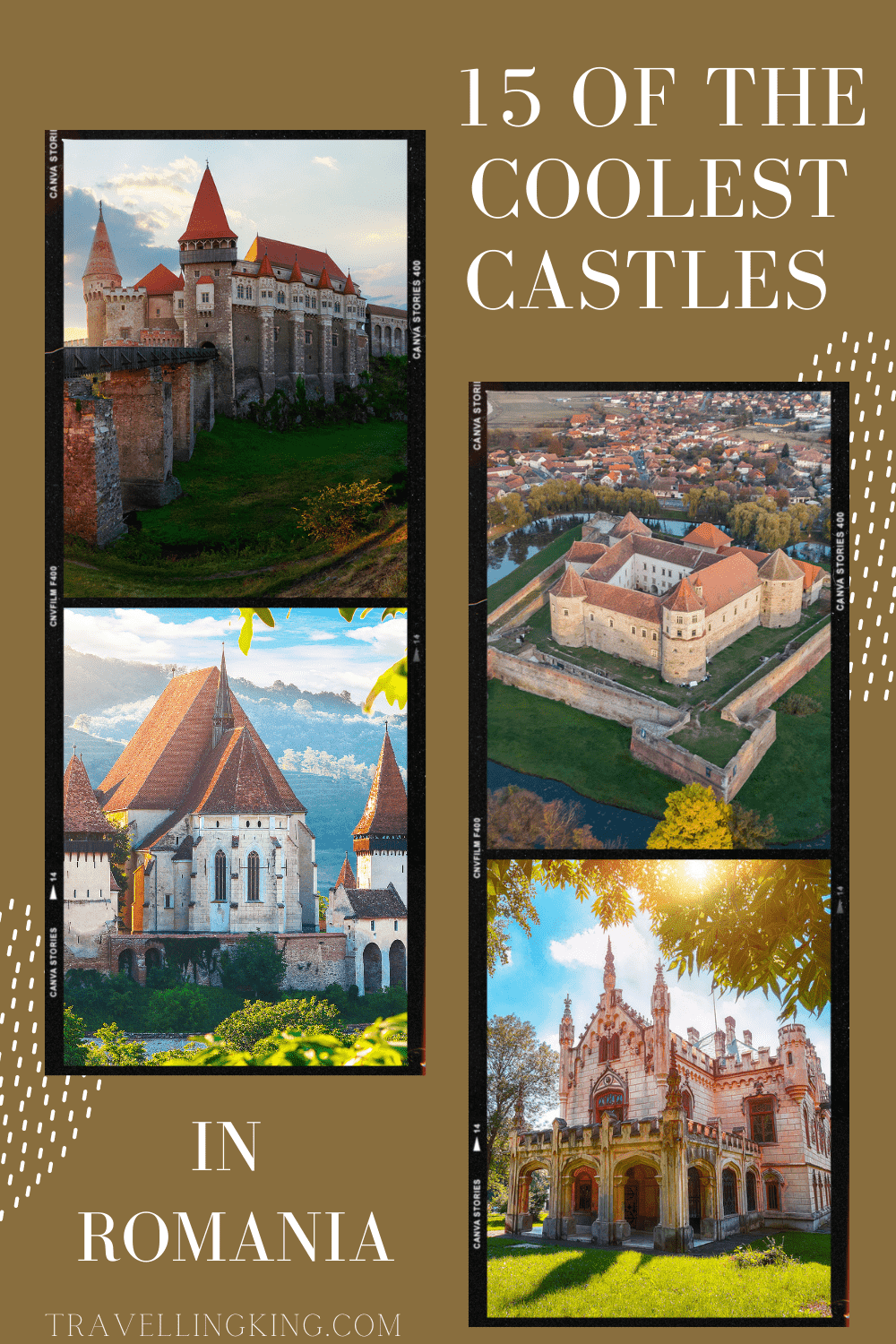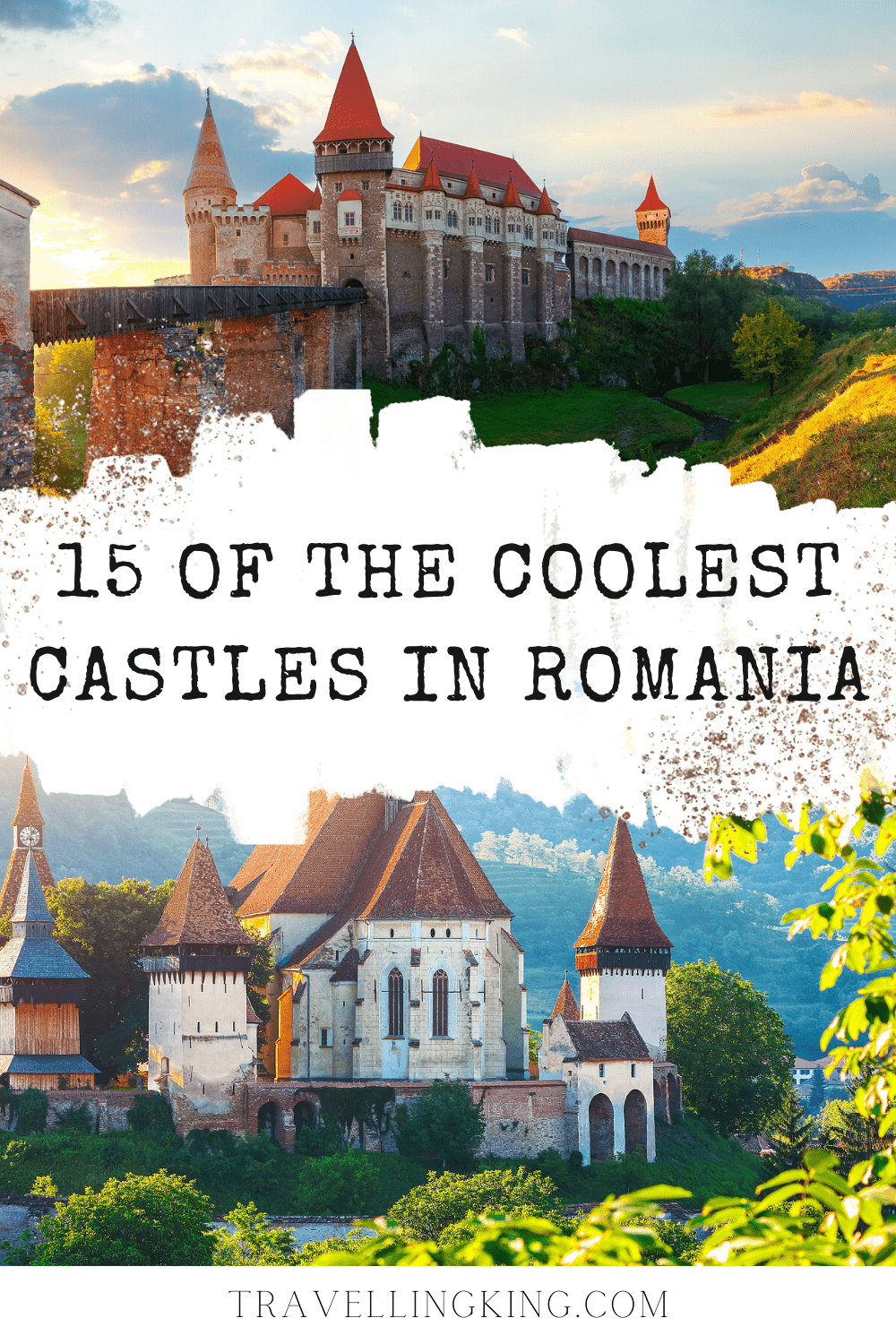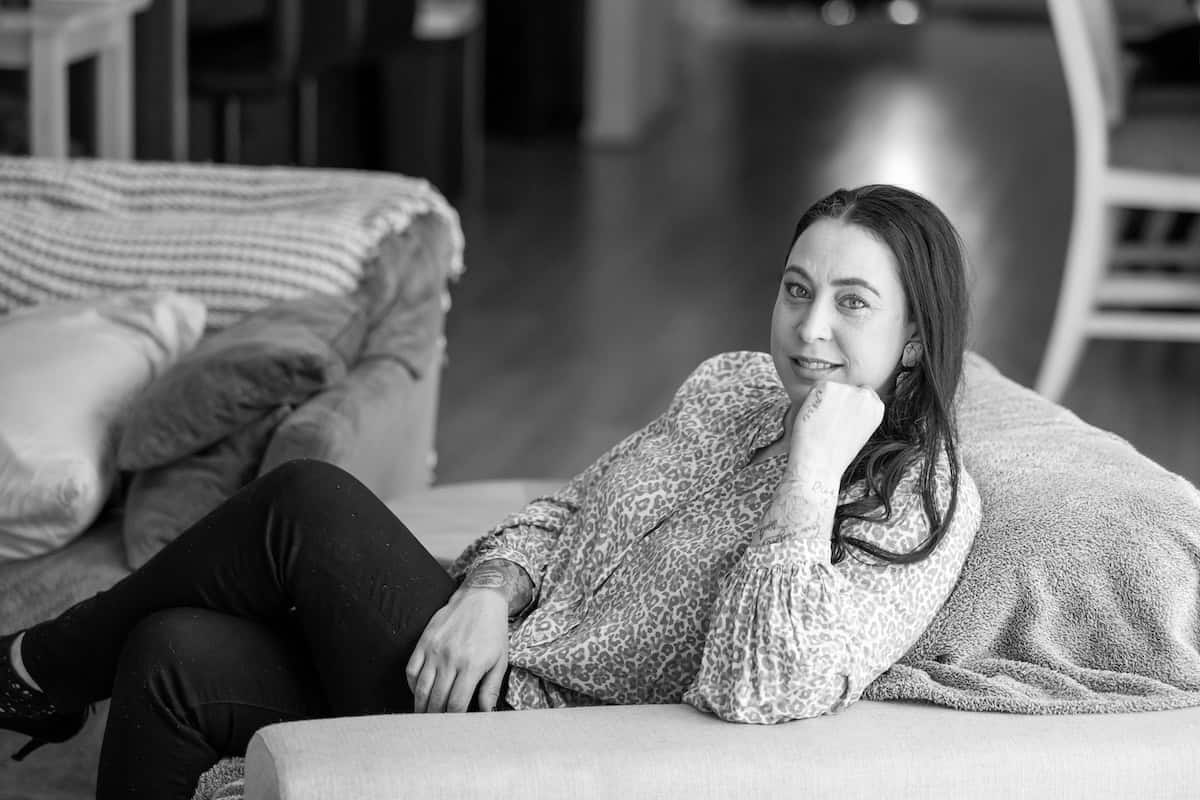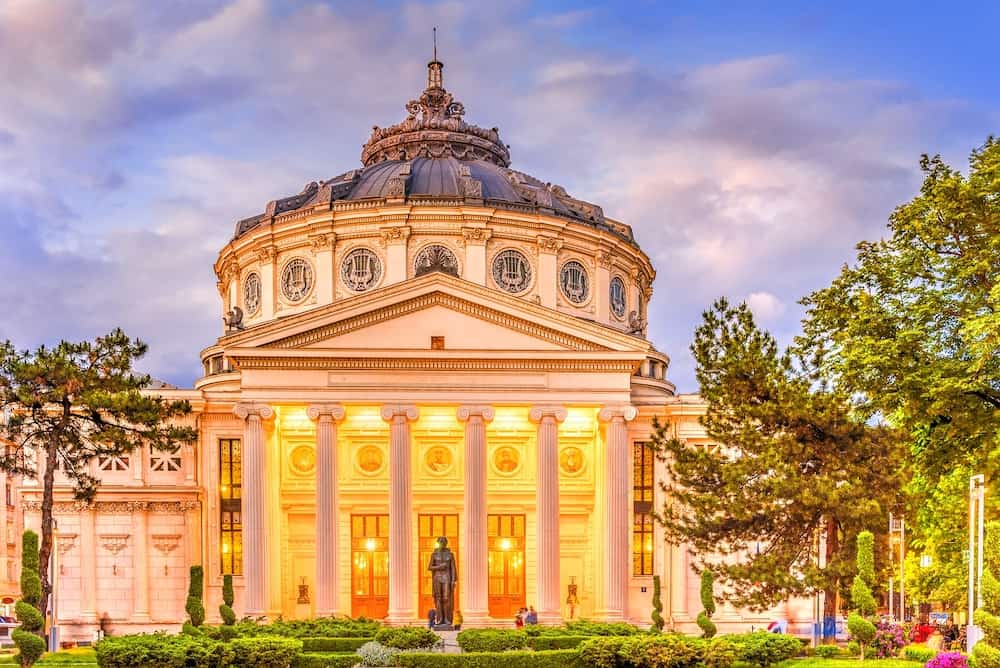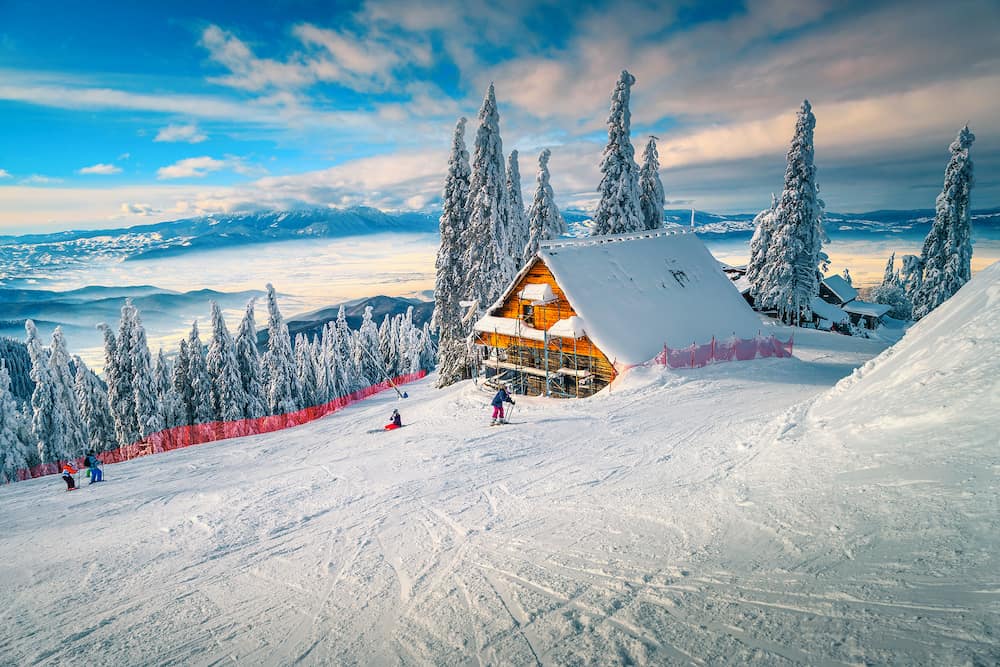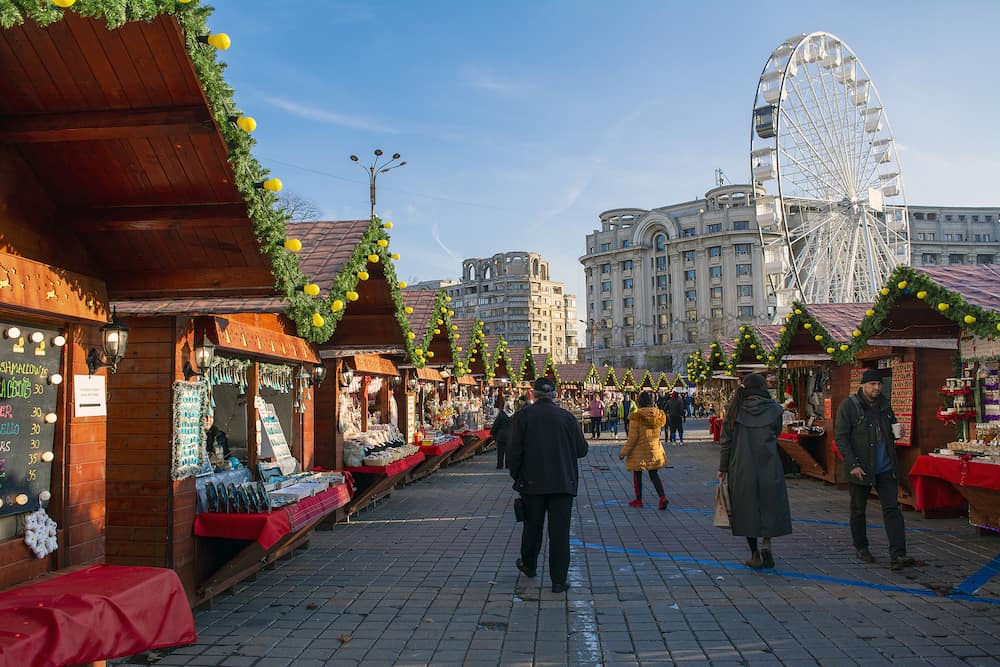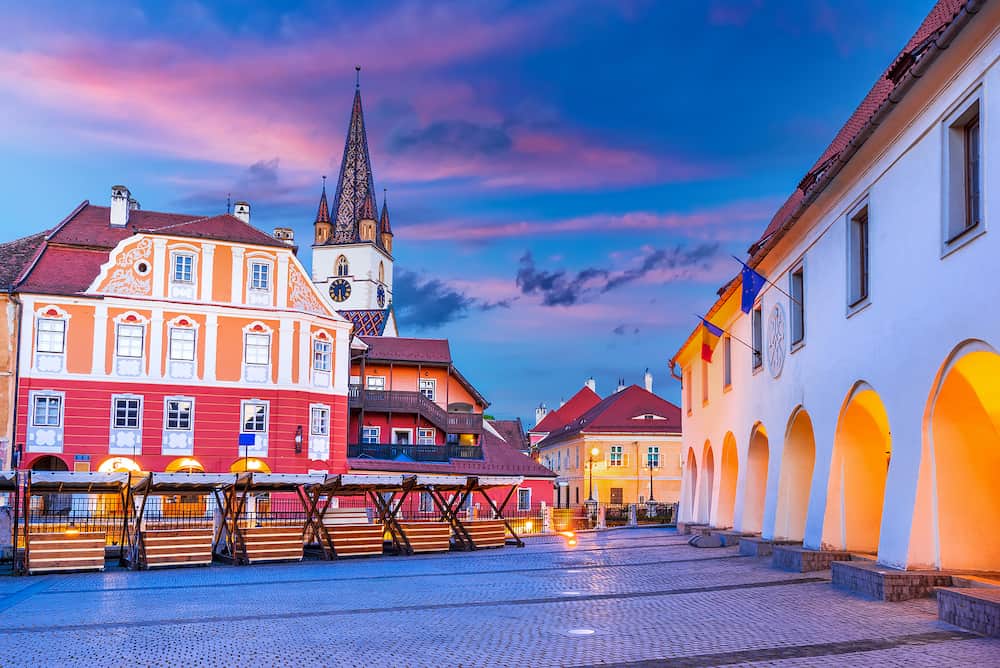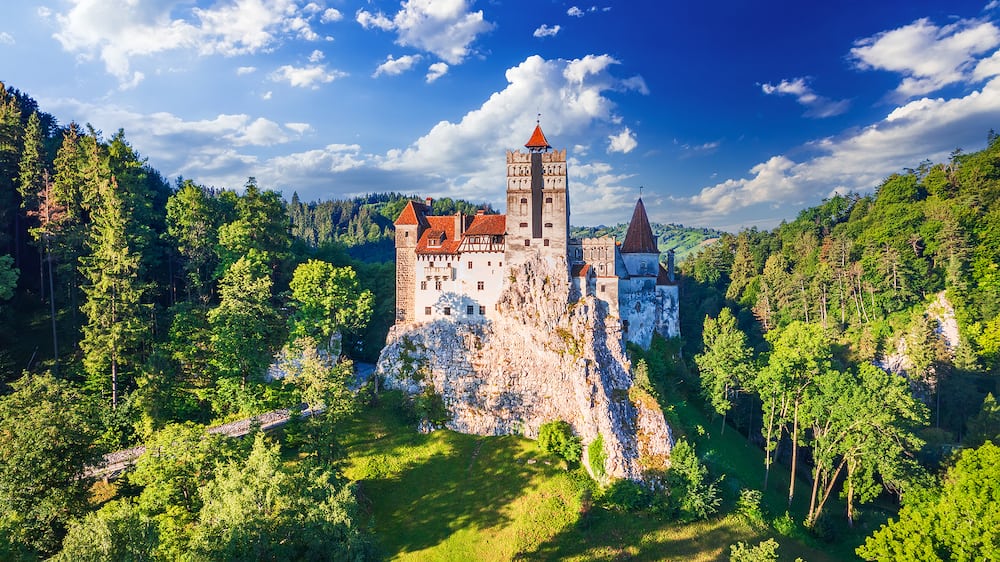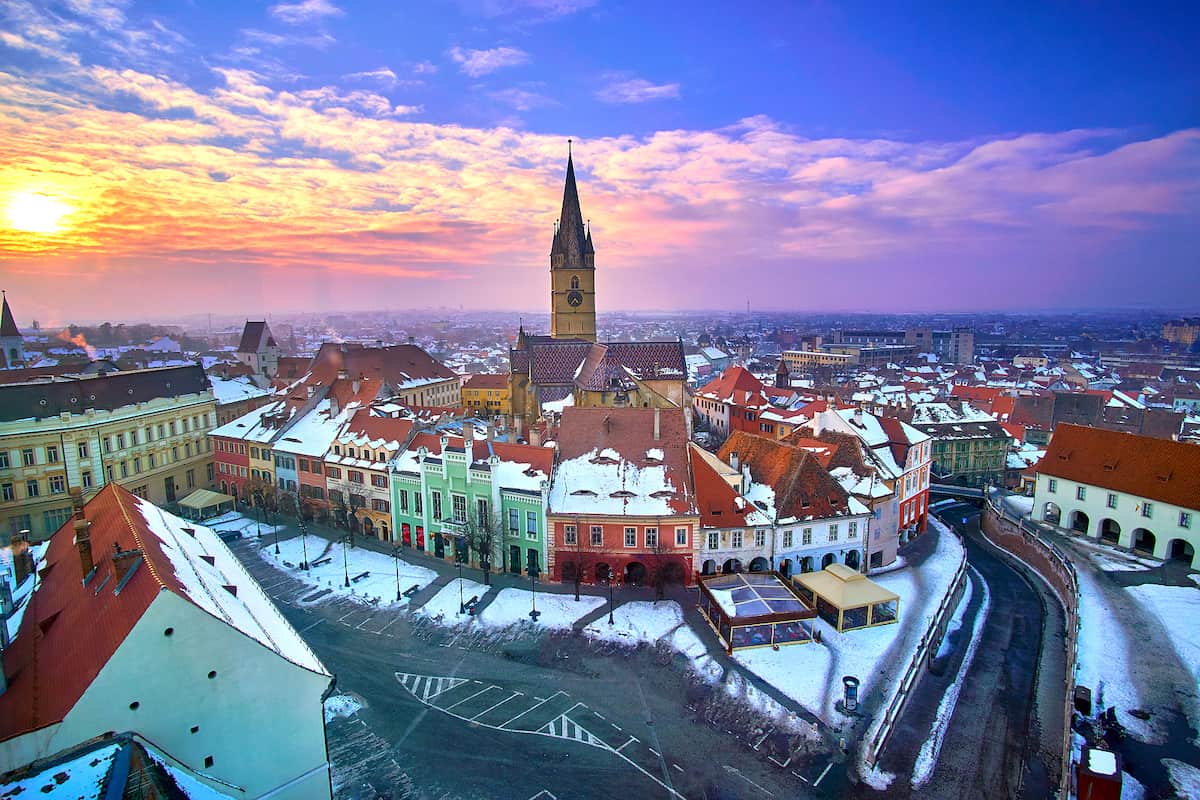15 of the Coolest Castles in Romania
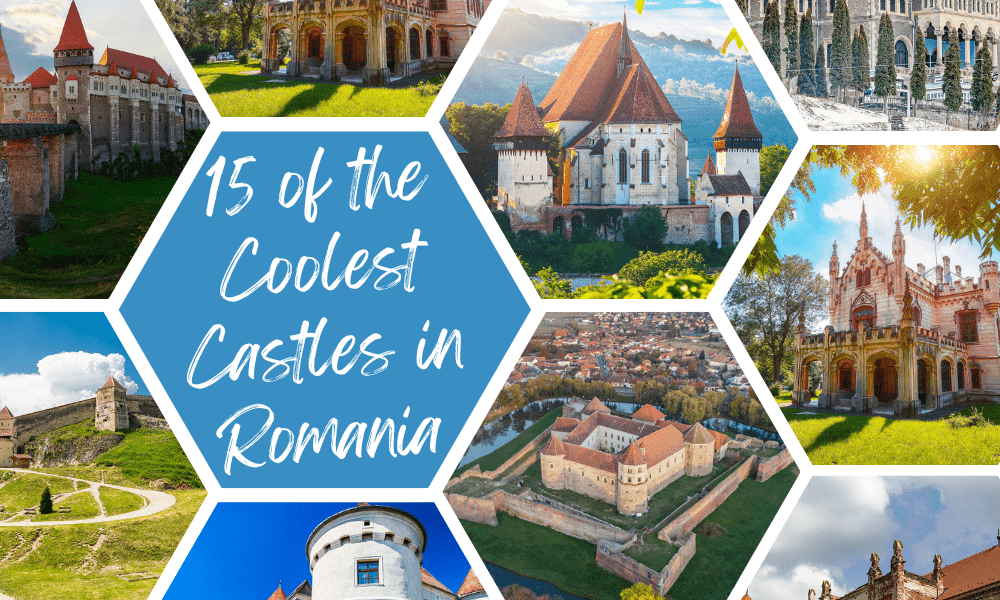
When you first think of Romania, Count Dracula is likely what springs to mind. While Transylvania is a huge tourism draw, there is so much more to this Central European region than its vampire folklore.
You may be surprised to learn how many castles are in Romania. The country is home to over 300 beautiful castles, each showcasing a rich medieval history and transporting you back in time.
The oldest castles, some dating back to the 1400s, were strong structures built to defend against neighbouring invaders. On the other hand, those built or renovated in the 1800s are mesmerising pieces of architecture that were once home to royalty.
Sadly, it’s impossible to see every castle in one trip. Below is a useful guide to some of the most famous castles in Romania that you might want to prioritise, as well as a few fortresses, citadels and fortified churches.
Plan your trip
Save on fees abroad with the Wise Card—use it at ATMs, restaurants, and for flights or hotels in over 150 countries. Manage 40+ currencies in real-time with the Wise app.
Need Help Planning?
- Cheap Flights: Find the best deals.
- Accommodation: From hostels to luxury stays.
- Car Rental: Affordable options worldwide.
- Sightseeing Tours: Explore without breaking the bank.
- Travel Adapter: One adapter for all your needs.
- Travel Insurance: Don’t risk it—stay covered.
This post includes affiliate links. Read my full disclosure and content policy.
Corvin Castle
Easily one of the best castles in Romania is Corvin Castle, also known as Hunyadi Castle. This Transylvanian landmark is listed as one of the Seven Wonders of Romania and is also one of the largest castles in Europe. In the 1600s, it was owned by Count Stefan Bethlen, the Prince of Transylvania at the time.
Built in the 1400s along the Zlasti River, the Gothic-Renaissance structure features looming bastions and both rectangular and circular towers, which were architecturally innovative for the era. Among the notable areas of the castle are the Knight’s Hall, the Diet Hall, and the circular stairway.
17th-century renovations allowed for aesthetic additions and the construction of a newer palace. Two new towers, the White Tower and the Artillery Tower, were also built for military purposes.
Despite its immense beauty, Corvin Castle has a mysterious past. Some historians claim that Vlad the Impaler was imprisoned here by John Hunyadi, the Voivode of Transylvania. The castle is also connected to the legend of Count Dracula.
While a car is the quickest way to reach Corvin Castle, you can also take a bus or train to Hunedoara if you’re not in a hurry. Tickets cost 36 lei per adult, with discounts for students, pensioners, and pre-organised groups.
Accommodation near Corvin Castle:
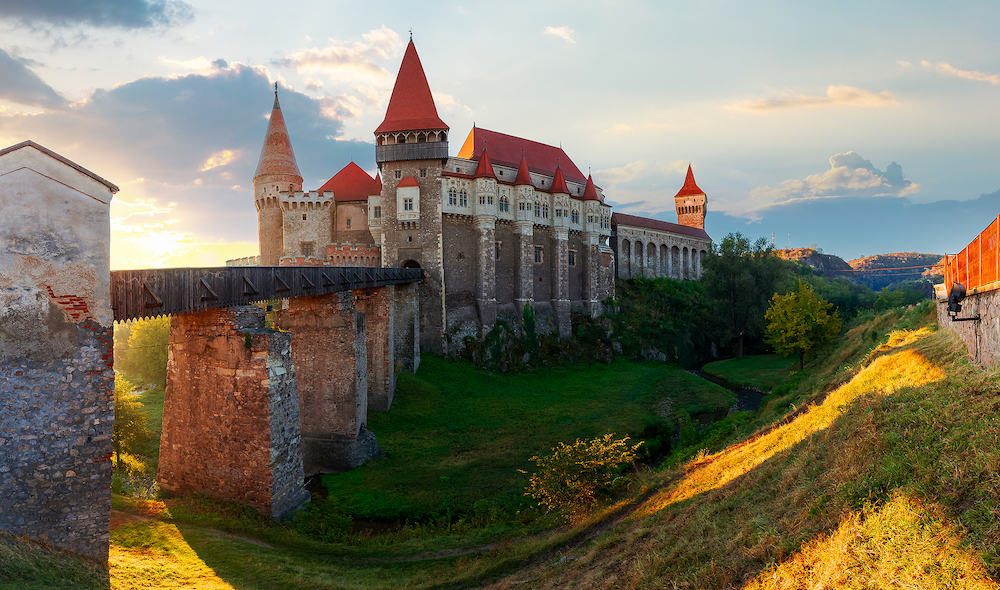
Peles Castle
Peles Castle is undoubtedly the most picturesque landmark within the Carpathian Mountains and one of the best gothic castles in the region. The Neo-Renaissance and Gothic Revival beauty stands along a medieval route between the regions of Transylvania and Wallachia. Initially a summer hunting retreat for King Carol I of Romania in 1873, the castle now functions as a museum open to public tours.
As the first castle in the world powered by electricity, it included some incredibly technologically-advanced features for its time. In addition to running hot and cold water, Peles Castle had its own power plant, central heating, and central vacuuming system.
Baroque influences can be seen throughout the interior, with plenty of carved wood and elegant fabrics. Many of the 170+ rooms are dedicated to a specific theme from around the world and decorated accordingly in immaculate detail. Notable examples include French, Turkish, Florentine and Moorish rooms.
Peles Castle is a short bus or taxi ride from Sinaia train station, or a 40-minute walk if you’re feeling up to it. Basic exhibition tickets cost 50 lei per adult, and tours can be purchased for 50 to 100 lei extra.
Accommodation near Peles Castle:
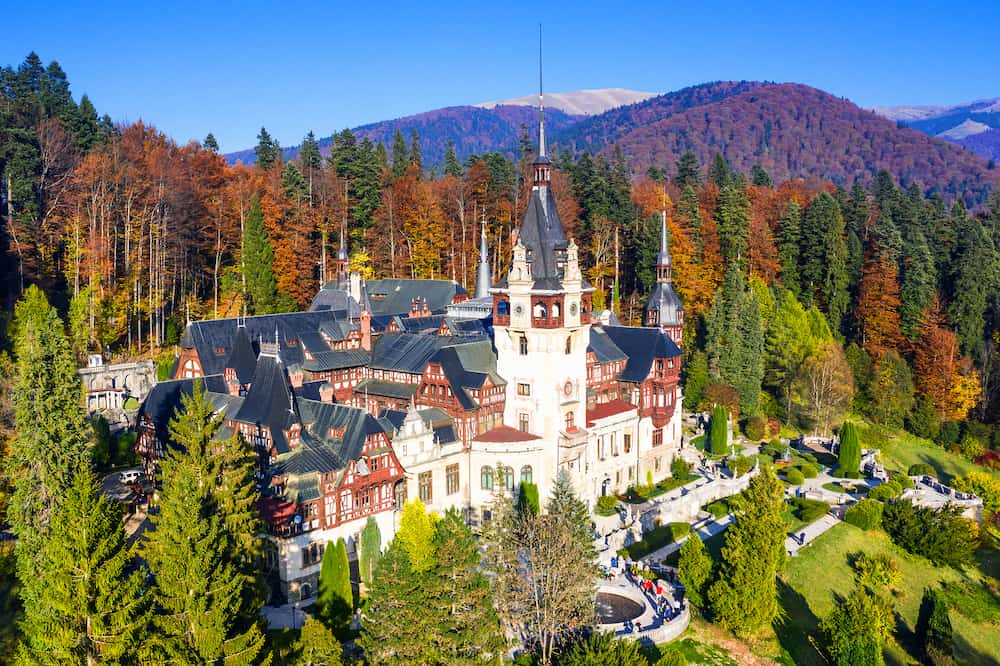
Jidvei Castle
Jidvei Castle, also called Bethlen-Haller Castle, is found in the Transylvanian commune of Cetatea de Balta and showcases a range of architectural styles. Originally constructed between 1570 and 1580 in stunning French Renaissance style, renovations in the 17th century allowed for the addition of Baroque elements. The castle is easily identified by the large round towers at each corner.
On the land surrounding the castle is one of the best vineyards in Romania. With a history of wine-making dating back thousands of years, a wine tour in this region is sure to be both scenic and educational. To get there, it’s best to rent a car with great GPS or organise a pick-up in advance.
Admission to the castle costs 25 lei per person over 12 years of age, and guided tours are available multiple times per day. A tour is recommended if you’re interested in learning about the different myths and legends from over the years,
Accommodation near Jidvei Castle:
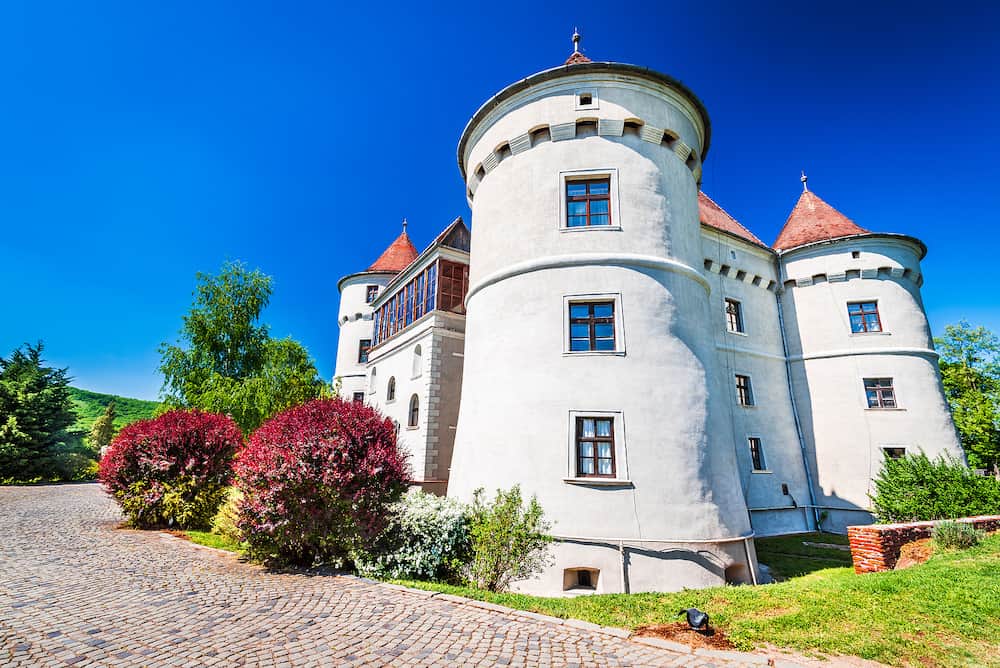
Sturdza Castle
If you’re looking for a romantic setting, Sturdza Castle is the place to go. You’ll find this Neo-Gothic gem in the northeastern village of Miclauseni. It currently belongs to the Miclauseni Historic Monastery Complex, which also includes the 18th-century Church of the Holy Princes and Annunciation and the Miclauseni Monastery Park.
Sadly, much of the inner grandeur was destroyed due to the Russian invasion at the height of communism. Before this, the castle was filled with art, jewels and books. After being used as a military garrison, a warehouse, and even an orphanage later on, some of its former beauty has now been restored.
Guided tours cost 20 lei per adult and run hourly. Hoping to stay a little longer and fall in love with this fairytale setting? You can easily make a reservation online to dine at the Miclauseni Castle restaurant or stay overnight at the nearby Casa Macrina.
Accommodation near Sturdza Castle:
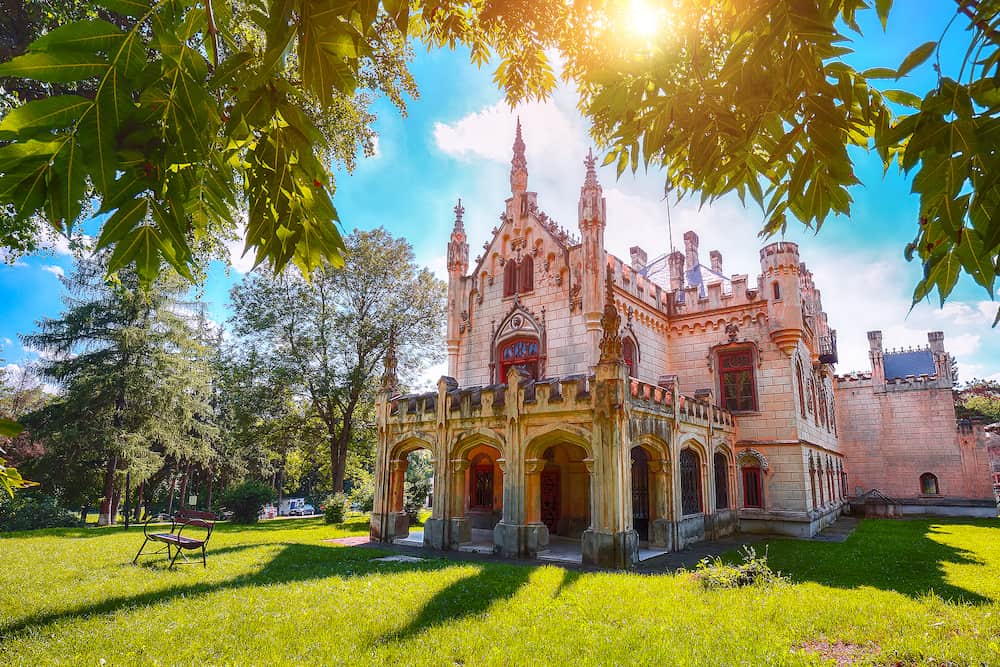
Bran Castle
If there’s one place you absolutely must see while in Romania, it’s Bran Castle. This historic castle near Brasov in the Transylvania region is commonly associated with Dracula. In its own right, however, it’s a stunning piece of history that is worth seeing and learning about.
Perched atop a hill 760 metres above sea level, the medieval fortress definitely has an eerie vibe to it. The red-tiled pointed towers and steep, narrow staircases add to this ominous feeling, as does the secret passageway connecting the first and third floors.
The first recorded mention of the castle was in 1377, making it the oldest castle in Romania. It was notably used between 1438 and 1442 to defend against the Ottoman Empire. Later on in 1920, the castle became a royal residence and a retreat for Marie of Romania in particular. Today, you can walk through the castle’s museum and see the various furniture and artwork collected by Queen Marie.
To get to Bran, you can take a bus from Brasov. Standard admission costs 45 lei per adult, 35 lei for seniors 65 and over, 25 lei for students and 10 lei for children. Entrance is free for disabled guests and children under 7. Optional extras include the Time Tunnel for 20 lei and Medieval Torture Instruments for 10 lei.
Accommodation near Bran Castle:
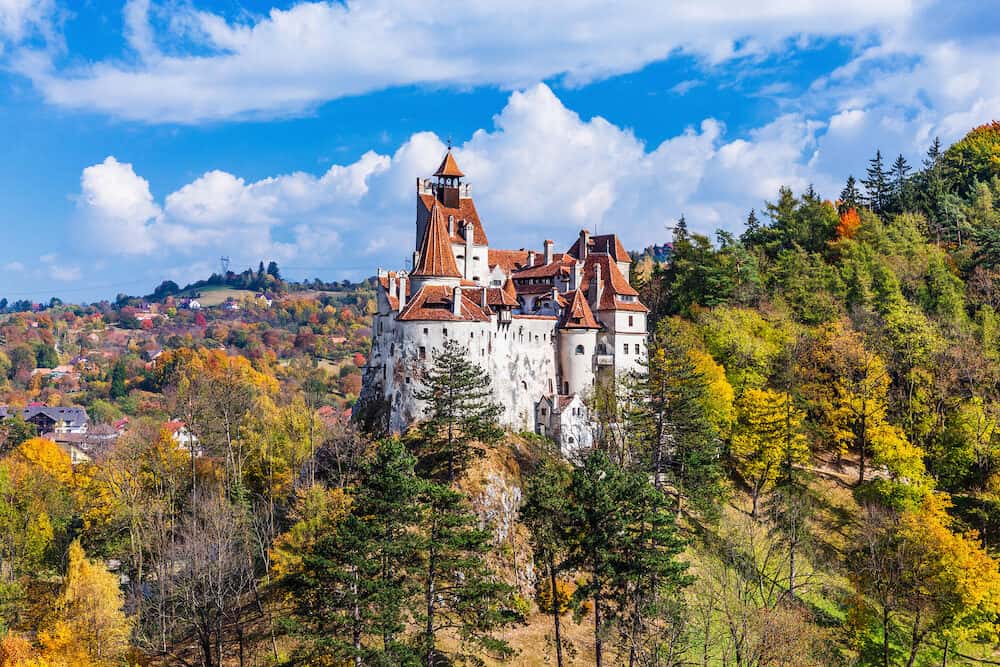
Cantacuzino Castle
Although Cantacuzino Castle is one of the more recently built castles in Romania, it still holds a lot of artistic and historic value. Construction was completed in 1911 by a prominent Neo-Romanian architect and served as a summer retreat for Prince Gheorghe Grigore Cantacuzino and his family.
The pavilion-style castle is made from carved stone and brick, and is surrounded by lush landscaped gardens. The interiors contain a plethora of romantic details and ornaments, from oak wood ceilings, doors and staircases to Venetian mural paintings and Murano stained glass. The castle has only been open to the public since 2010, and the upper floor was converted into an art gallery in 2015.
A train ride from Bucharest to Busteni takes under two hours, and the castle is only a short walk away from the station. Entrance cost is determined by the visit packages you select, whether you want to see the castle and the sculpture exhibition or the art gallery as well.
Accommodation near Cantacuzino Castle:
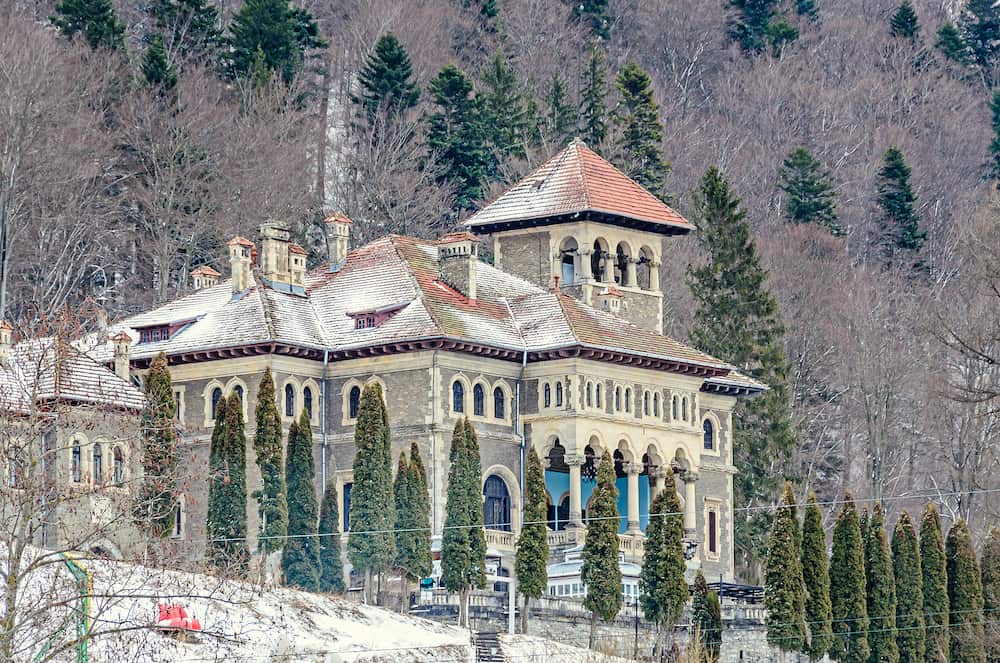
Banffy Castle
Since its initial construction over an existing manor, Banffy Castle has undergone numerous reconstructions. As a result of this, the castle boasts a unique mix of Baroque, Renaissance, Neo-Gothic and Neoclassical styles and features. As the largest castle in the region, Banffy has earned the nickname ‘The Versailles of Transylvania’.
In 1944, the castle was used as a field hospital before being destroyed by the Nazis in retaliation towards the owner, Count Miklos Banffy. It was again repurposed during Communist rule for different needs.
Restoration plans began in 1999 after the castle was listed in the World Monuments Watch List of 100 Most Endangered Sites at the request of the Transylvania Trust. The Built Heritage Conservation Training Centre has since opened at Banffy to teach traditional building skills for repairing and maintaining historic structures.
Since 2013, the Electric Castle music festival breathes new life into the space each July. A portion of the profits from this festival goes towards the ongoing restoration of the grounds.
There are plenty of trains that can take you to Bontida Station, the closest stop to Banffy Castle. There’s also a nearby bus stop along the E576 road.
Accommodation near Banffy Castle:
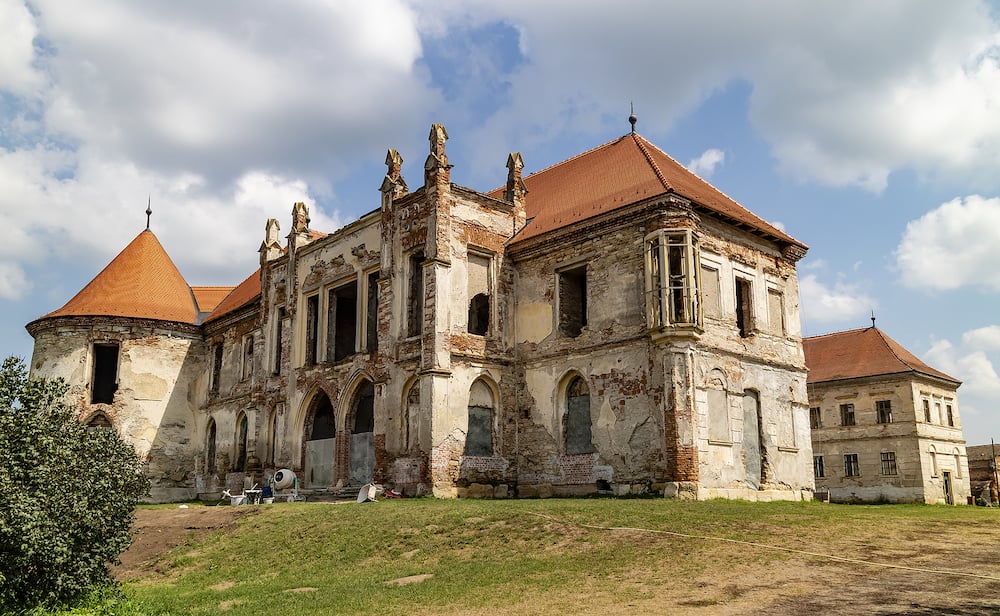
Savarsin Castle
High up in the Transylvanian countryside in Arad County sits Savarsin Castle, one of the most charming palaces in Romania. The historic building is surrounded by six-and-a-half hectares of private property formerly owned by King Michael I.
For centuries, the house was owned by Hungarian noble families. In November 1784, Savarsin was set on fire during the Revolt of Horea, Closca and Crisan, and was only rebuilt in 1860. Nowadays, the property is the official country home of the Romanian royal family. Since 2021, the grounds have become open to the public over the summer.
The castle is a 15-minute walk from the Savarsin railway station, and just off the main road, DN7.
Accommodation near Savarsin Castle:
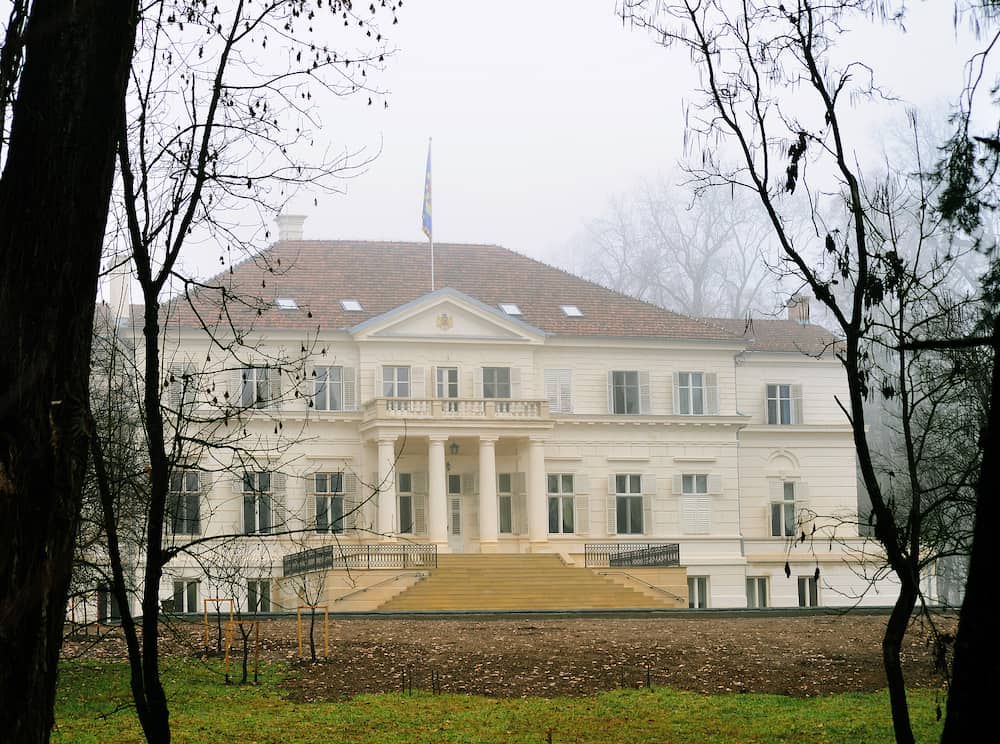
Deva Fortress
Of all of Romania’s famous fortresses, the Fortress of Deva is easily the most unique. The fortress is found at the very top of an extinct volcano in the Poiana Rusca Mountain Range, at an altitude of 378 metres. Because of this advantageous positioning, it was used primarily for strategic military purposes.
Deva is connected to a well-known Hungarian folk tale called Komuves Kelemen (or Clement Mason in English). The tale details the surprising struggles of a stonemason and 12 bricklayers trying to build the castle in the mid-13th century.
Unfortunately, the fortress was destroyed in the 19th century due to an explosion. If you want to take a look around for free, you can take an inclined lift beginning at the bottom of the hill, or by walking from Parcul Cetatii (Citadel Park). This vantage point also offers a spectacular view of the city of Deva below.
Accommodation near Deva Fortress:
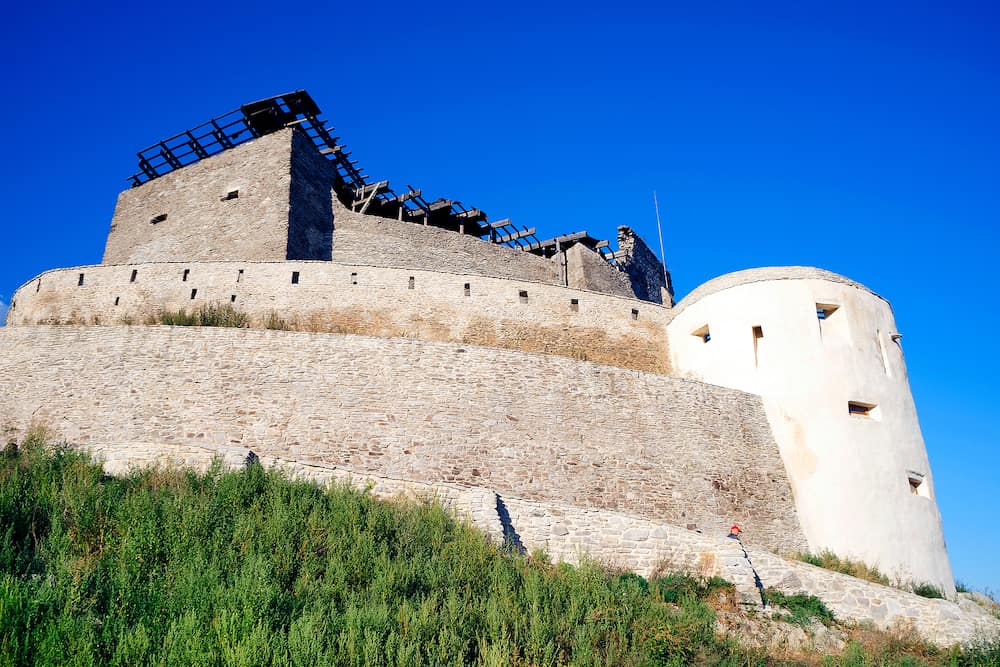
Rasnov Citadel
Rasnov is another strategic castle in central Transylvania, built atop a rocky hill surrounded by dense forest. It was constructed by the locals in the 1300s as a refuge for the neighbouring villages, as its altitude made it easy to spot incoming enemies.
Since then, the citadel has been besieged by the Ottoman Empire in the 15th century, further destroyed by a fire in the 18th century, and hit by earthquakes in the early 19th century.
The remnants of stone houses, the chapel and the school still remain. A frequently told legend says 300-year-old treasure lies at the bottom of the 150-metre-deep well. Allegedly, two Turkish prisoners were ordered to dig this well for 17 years, and carvings from the Quran were later uncovered on the walls.
Maintenance and restoration are currently underway, so visitors may not be permitted inside. Yet, it’s still worth looking around the grounds and admiring the beautiful exterior. From Brasov, board the 120 bus to get to Rasnov. Once you’re there, either make the short walk up the hill or take the lift.
Accommodation near Rasnov Citadel:
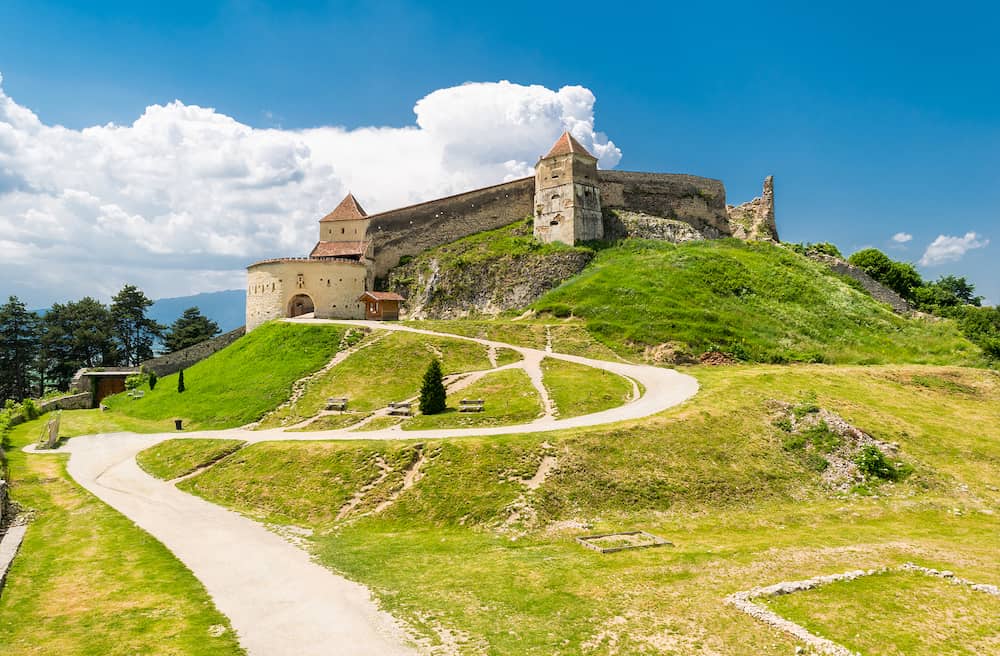
Biertan Fortified Church
Biertan Fortified Church is an impressive Roman Catholic turned Lutheran medieval stronghold. The first recorded mention of its existence was made by King Matei Corvin in 1486.
As a fortified church, it was used as a safe haven for villagers in the case of an attack. The strong three-tiered walls standing 10 metres high made the structure impossible for enemies to conquer.
Among the late Gothic architecture are several fascinating features, from the remarkably heavy oak doors to the church’s 19th-century organ boasting 1,290 pipes. The Bell Tower, the Gate Tower, the Clock Tower and the Bacon Tower are also worth admiring.
Biertan is best accessed via car. If you choose to drive yourself from Brasov, the trip will take a little over two hours. You could also get the train to Dumbraveni and order a taxi to take you the remaining 10 kilometres. Admission into the church will set you back 10 lei.
Accommodation near Biertan Fortified Church:
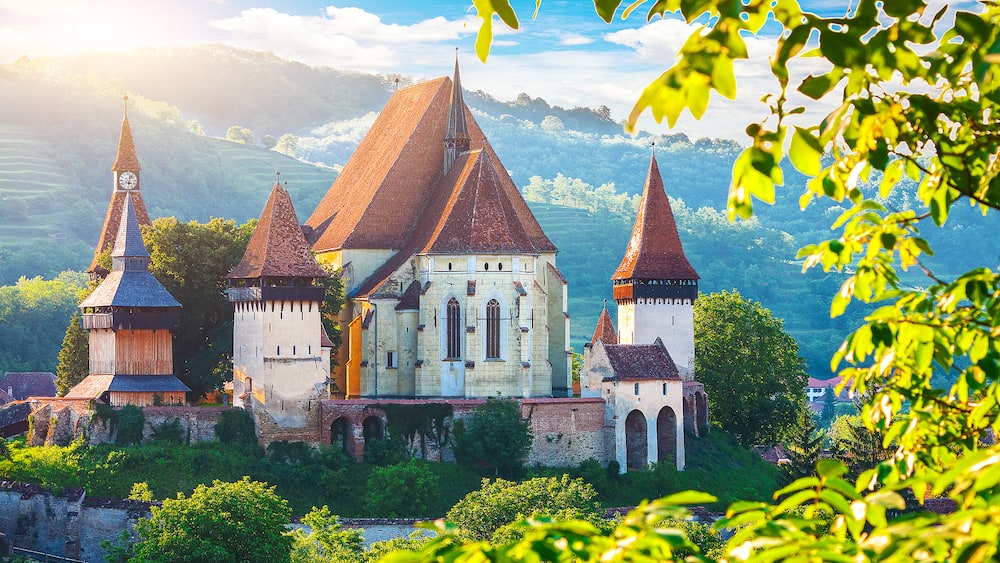
Alba Carolina Fortress
The largest citadel in Romania is the impressive Alba Carolina Fortress. It was built in the 1700s during the Habsburg rule of Transylvania on the site of an old medieval citadel and the fortress of Legio XIII Gemina. The iconic star-shaped walls surrounding the citadel were influenced by Vauban architecture.
There are museums, churches and cafes inside, but the most historically significant area is the Union Hall. 1,228 delegates met in this hall in 1918 to seal the union between Transylvania and Romania.
A must-see attraction is the Guard Change of the Citadel during the high season for tourists, usually from May to September. Guards dressed in 18th-century infantry, artillery and cavalry uniforms welcome visitors through the gates, with a ceremony taking place at midday. While walking around the grounds of the citadel is free, the museums charge a small entry fee.
The fortress is 100 kilometres south of Cluj-Napoca. A train there will take about three hours, plus a 20-minute walk from Alba Iulia Station.
Accommodation near Alba Carolina Fortress:
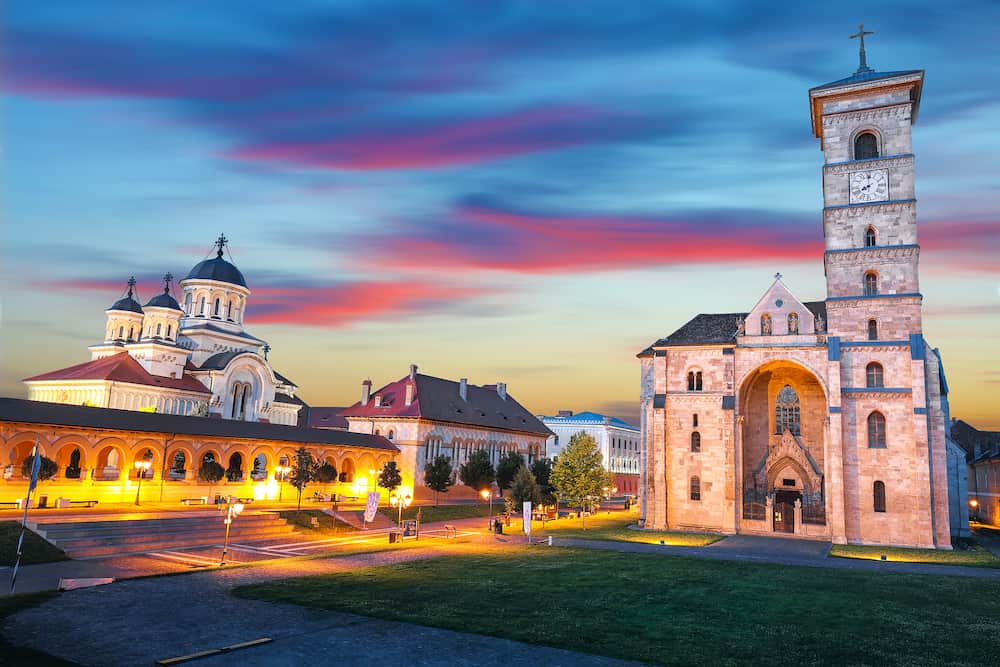
Fagaras Fortress
In 1310, Fagaras Fortress was constructed on the land of an older wooden fortress to fight off invaders. Following enlargements during the 15th and 17th centuries, it became one of Transylvania’s strongest fortifications. Surrounded by a deep moat with access only by a singular drawbridge, it was the perfect protection against the Ottomans and the Tatars.
The fortress became the Prince of Transylvania’s royal residence in the 16th century. Later on, it became a military prison and housed political prisoners after the communist takeover in 1946. Since the 1960s, Fagaras Fortress has hosted a museum containing medieval weapons, Roman artefacts and folk crafts from the region.
The small city of Fagaras is between Sibiu and Brasov along the DN1 road. The Fagaras train station is 2 kilometres south of the fortress, so you can either walk or call a taxi from there. Admission into the fortress costs 20 lei per adult and only 10 lei for students.
Accommodation near Fagaras Fortress:
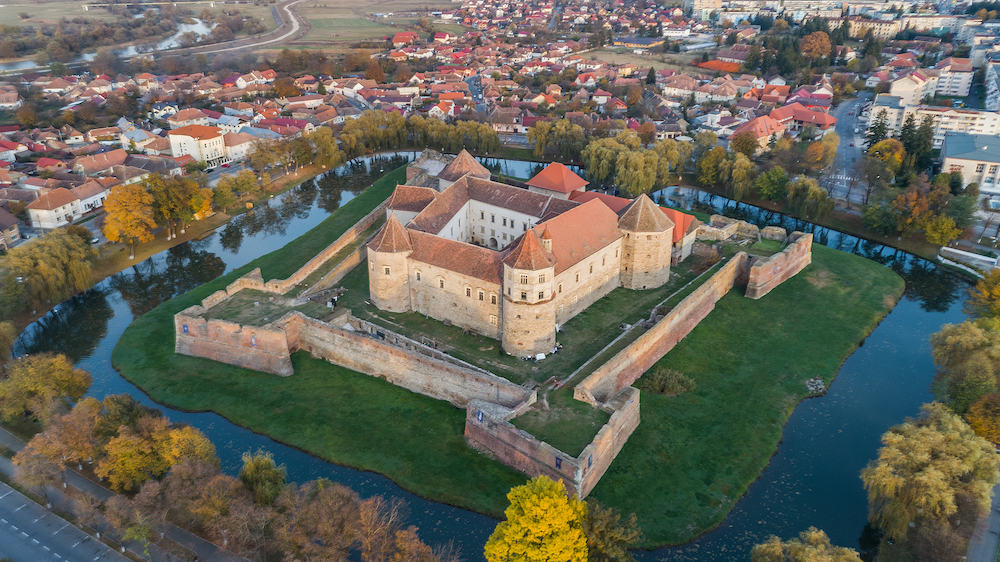
Csernovics Castle
Also known as Macea Castle, the Csernovics Castle is an elegant architectural site in Macea, Arad County. Originally belonging to the noble Csernovics family in the 19th century, the property later belonged to the Nagy Karolyi family who expanded the castle. Rumour has it that this change of ownership was due to a card game.
Some of the upgrades included an extra wing and a 30-metre-high tower. During the 20th century, the castle was used as an orphanage, an asylum, and a rehabilitation centre.
As the castle is now in use by the University of Arad, visitors aren’t allowed inside. However, it’s still worth taking a look at the gorgeous exteriors and surrounding gardens, including the original greenhouses and swimming pool.
The castle is right along the Hungarian border, 25 kilometres north of the city of Arad. Since there aren’t any public transport options available, you’ll need to drive or join a tour.
Accommodation near Csernovics Castle:
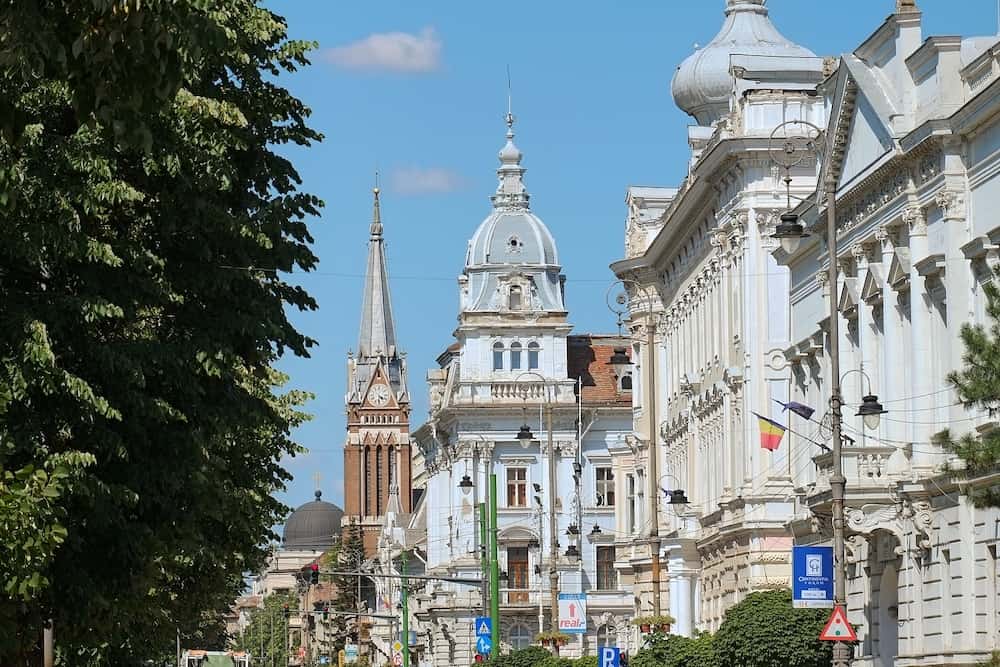
Iulia Hasdeu Castle
The quaint Iulia Hasdeu Castle has the most heartwarming backstory of all. At only 19 years old, child prodigy Iulia Hasdeu passed away from tuberculosis. Her grieving father, famous writer and philologist Bogdan Petriceicu Hasdeu, sought spiritual guidance. A medium informed him that his daughter wished for him to build a castle in her honour. Construction was completed in the late 19th century.
Iulia was the first Romanian woman to be accepted into the Sorbonne University in Paris. Inside this mini castle is a museum where you can learn more about her short life, as well as the lives of other Hasdeu family members.
Similar to many of the larger Romanian castles, this palace has myths and legends of its own. Visitors have claimed to see visions of Iulia walking in the gardens and sitting at her desk. For those interested in ghosts and the paranormal, a visit to the Iulia Hasdeu Castle will be the perfect way to round out your Romanian adventure.
Accommodation near Iulia Hasdeu Castle:
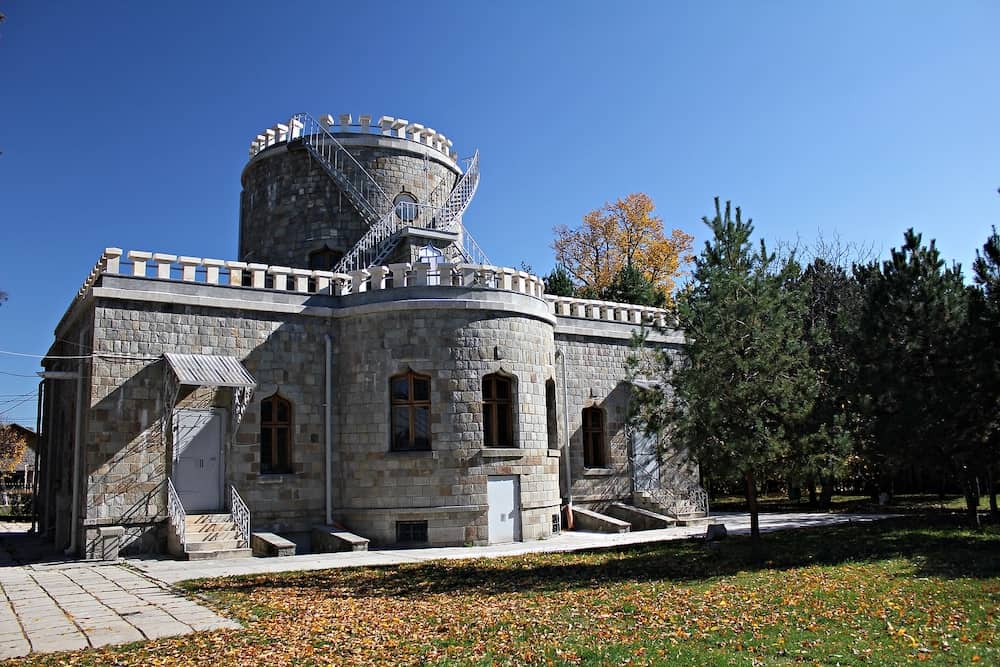
If you’d like to save it for later, please save it to Pinterest.
